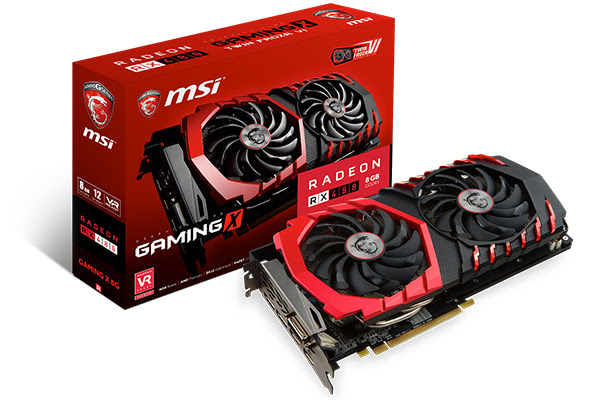MSI Prepares To Freeze The RX 480
MSI is preparing four customized RX 480 GPUs for launch with its Twin Frozr VI thermal solution. All of these cards are quite similar but with slightly different features and clock speeds.
The Twin Frozr VI thermal solution uses two Torx 2.0 fans seated on a beefy aluminum heatsink. The heatsink is perforated by a series of six nickel-plated copper heatpipes, which in turn make direct contact with a nickel-plated copper baseplate. The protective nickel coating on the copper is designed to extend the heatsink’s durability and usefulness by preventing corrosion.
The cooler also supports MSI’s “Zero Frozr” feature, which will shut down the fans when the GPU drops below 60 degrees Celsius. This helps keep the case relatively quiet when the system is idling.
The four different variants MSI plans to release will all look nearly identical. One of the key differences is that two of the cards will come with a metal backplate, whereas the backplate is an optional feature on the other two. The graphics cards will also differ in terms of clock speed and RAM support.
There isn’t word on pricing at this time, but MSI expects these RX 480 GPUs will be available around the middle of August 2016.
| MSI Radeon RX 480 Twin Frozr VI Gaming GPUs | ||||
|---|---|---|---|---|
| Model | MXI Radeon RX 480 Gaming X 8G | MSI Radeon RX 480 Gaming 8G | MSI Radeon RX 480 Gaming X 4G | MSI Radeon RX 480 Gaming 4G |
| Core Clock Speed (OC Mode) | 1,316 MHz | 1,292 MHz | 1,316 MHz | 1,292 MHz |
| Memory | 8 GB GDDR5 | 8 GB GDDR5 | 4 GB GDDR5 | 4 GB GDDR5 |
| Thermal Solution | Twin Frozr VI | Twin Frozr VI | Twin Frozr VI | Twin Frozr VI |
| Backplate | Yes | Optional | Yes | Optional |
| LED Lighting | Yes (RGB) | Yes (RGB) | Yes (RGB) | Yes (RGB) |
| Display Ports | 2 x DisplayPort2 x HDMIDL-DVI-D | 2 x DisplayPort2 x HDMIDL-DVI-D | 2 x DisplayPort2 x HDMIDL-DVI-D | 2 x DisplayPort2 x HDMIDL-DVI-D |
| Dimensions (L x W x H) | 276 x 140 x 42 mm | 276 x 140 x 42 mm | 276 x 140 x 42 mm | 276 x 140 x 42 mm |
Get Tom's Hardware's best news and in-depth reviews, straight to your inbox.

